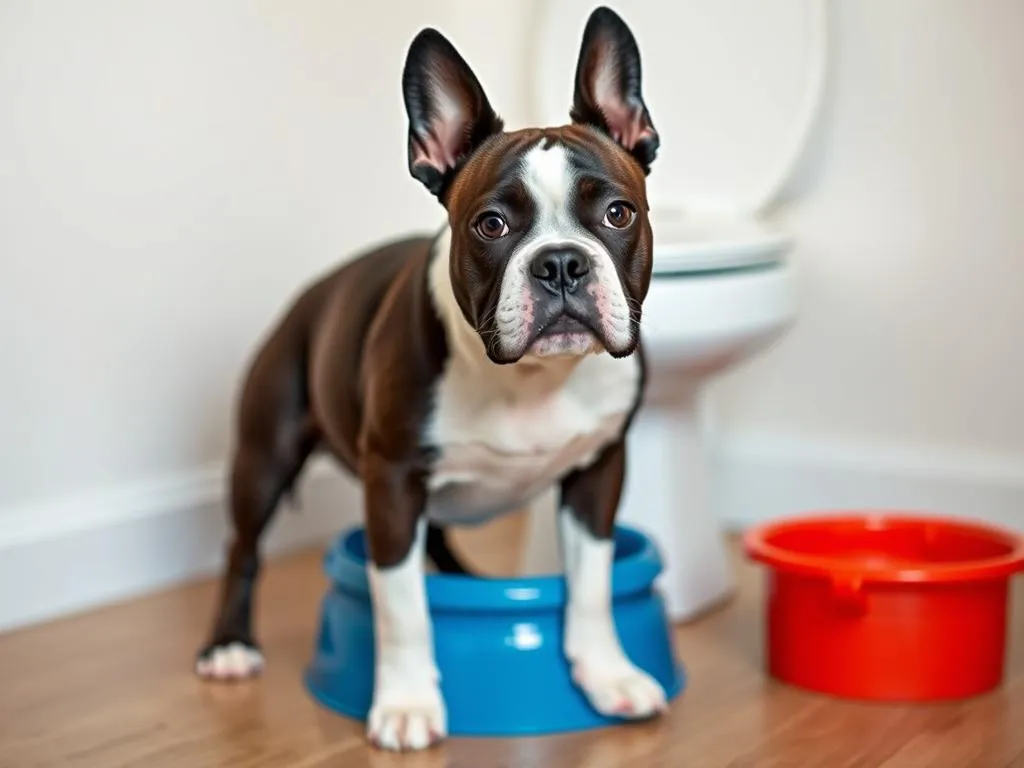
Potty training your dog is one of the most essential responsibilities of being a pet owner. It not only helps maintain cleanliness in your home but also fosters a healthy relationship between you and your furry friend. Among various breeds, Boston Terriers present unique challenges during potty training due to their distinct characteristics and temperament. This guide aims to provide a step-by-step approach to how to potty train a Boston Terrier, ensuring a smooth and successful process.
Understanding Your Boston Terrier
Characteristics of Boston Terriers
Boston Terriers are compact, energetic dogs known for their playful and affectionate nature. They typically weigh between 10 to 25 pounds and possess a short, smooth coat that requires minimal grooming. Their friendly demeanor makes them excellent companions, but their stubborn streak can complicate the potty training process.
Boston Terriers are intelligent but may sometimes exhibit a strong-willed tendency, which can lead to challenges in adhering to your training efforts. Understanding these traits is crucial in crafting an effective potty training strategy.
The Importance of Consistency and Routine
Establishing a consistent routine is vital when potty training any dog, but it’s especially important for Boston Terriers. These dogs thrive on routine, and maintaining a regular schedule for potty breaks can significantly enhance their learning process.
Consistency in your commands, rewards, and timeframes helps your Boston Terrier understand what is expected of them, making it easier for them to grasp the concept of potty training.
Preparing for Potty Training
Essential Supplies
Before embarking on the potty training journey, gather the necessary supplies. Here’s a checklist of items that can simplify the process:
- Potty Pads: Useful for indoor training and can be especially handy if you live in an apartment or have limited outdoor access.
- Crate: A well-sized crate can act as a safe space for your Boston Terrier and assist in crate training.
- Leash: Essential for taking your dog outside for potty breaks.
- Treats: High-value rewards for positive reinforcement.
- Cleaning Supplies: Enzymatic cleaners designed to neutralize pet odors.
Creating a designated potty area outdoors will also help your dog associate that specific spot with going to the bathroom.
Setting Up a Routine
Establish a daily schedule for potty breaks. Consider your Boston Terrier’s age, diet, and activity level when determining how often they need to go outside. Generally, younger dogs need more frequent breaks, while adult dogs can manage longer intervals.
Here’s a sample schedule for your Boston Terrier:
- Morning: Take your dog out immediately after waking up.
- After Meals: Wait about 15-30 minutes after feeding to take them out.
- Playtime: Monitor them closely during playtime for signs they need to go.
- Before Bed: Always take them out right before bedtime.
By adhering to this routine, your Boston Terrier will learn when and where to expect their potty breaks.
Step-by-Step Guide to Potty Training a Boston Terrier
Initial Steps
Begin the potty training process by introducing your Boston Terrier to the designated potty area. Use a specific command like “go potty” every time you take them out. This repetition will help them associate the command with the action.
Pay close attention to your dog’s signals that they need to go outside, such as sniffing, circling, or whining. If you notice these behaviors, take them out immediately.
Crate Training Basics
Crate training can be an effective component of potty training. Dogs generally avoid soiling their sleeping area, making the crate a useful tool for managing your Boston Terrier’s potty habits.
Here are some tips for introducing your dog to the crate:
- Make It Comfortable: Place a soft bed or blanket inside to make the crate inviting.
- Gradual Introduction: Start by allowing your dog to enter the crate voluntarily. Gradually increase the time they spend inside while rewarding them with treats.
- Never Use It as Punishment: Ensure your Boston Terrier views the crate as a safe space, not a form of punishment.
Positive Reinforcement Techniques
Using positive reinforcement is crucial in potty training. Dogs respond exceptionally well to rewards, and Boston Terriers are no exception.
When your dog successfully goes potty in the designated area, reward them immediately with treats, praise, or playtime. This immediate feedback helps reinforce the behavior you want to encourage.
Be consistent with your rewards, and over time, you can start to phase them out as your Boston Terrier becomes more reliable in their potty habits.
Dealing with Accidents
Accidents are a common part of the potty training process. It’s essential to understand that they are not a reflection of your dog’s intelligence or your training skills.
Common reasons for accidents indoors include:
- Infrequent potty breaks
- Excitement or anxiety
- Illness or dietary issues
When accidents happen, remain calm. Clean the area thoroughly using an enzymatic cleaner to eliminate odors that might attract your dog to the same spot again. If your Boston Terrier has an accident, do not scold them; instead, focus on reinforcing positive behaviors when they do go outside.
Troubleshooting Common Issues
Stubborn Behaviors
If your Boston Terrier displays signs of stubbornness, such as refusing to go outside or ignoring commands, it’s crucial to reevaluate your training approach.
Here are some strategies to encourage compliance:
- Shorter Training Sessions: Keep potty training sessions brief and positive to prevent frustration.
- Higher Value Rewards: Experiment with different treats to find what motivates your dog the most.
- Increased Patience: Remember that some dogs may take longer to learn than others. Patience is key in overcoming stubborn behaviors.
Regression in Training
Regression in potty training can occur for various reasons, including stress, changes in routine, or health issues. If your Boston Terrier begins to have accidents after being successfully trained, it’s important to address the underlying cause.
To get back on track:
- Revisit the Basics: Go back to the initial steps of potty training and reinforce the routine.
- Consult Your Vet: If regression persists, a veterinary check-up may be necessary to rule out any medical issues.
Advanced Potty Training Techniques
Bell Training
Bell training is an advanced technique that can be particularly effective for Boston Terriers. This method involves teaching your dog to ring a bell when they need to go outside.
Here’s how to implement bell training:
- Choose a Bell: Use a bell that can be easily reached by your dog.
- Introduce the Bell: When taking your dog outside, encourage them to touch the bell with their nose or paw.
- Reward the Behavior: When they ring the bell, immediately take them outside and reward them for going potty.
This technique can empower your Boston Terrier to communicate their needs, reducing the chances of accidents indoors.
Outdoor Training vs. Indoor Potty Pads
Deciding between outdoor training and using indoor potty pads depends on your living situation and lifestyle.
Outdoor Training:
– Pros: Instills outdoor bathroom habits and can be easier for long-term training.
– Cons: Requires more time and commitment for frequent trips outside.
Indoor Potty Pads:
– Pros: Convenient for apartments or bad weather conditions.
– Cons: May lead to confusion about where it’s acceptable to go.
Choose the method that best suits your lifestyle and your Boston Terrier’s needs. Some owners may even choose to combine both methods, initially using pads indoors and transitioning to outdoor training.
Maintaining Long-Term Success
Establishing a Lifelong Routine
Once your Boston Terrier is successfully potty trained, maintaining a consistent routine is crucial for long-term success. Dogs thrive on predictability, so keeping a regular schedule for potty breaks will help reinforce their training.
As your dog ages, you may need to adjust their routine to accommodate any changes in their bladder control or health needs.
Continued Reinforcement
To ensure your Boston Terrier maintains their potty training success, continue to reinforce positive habits. Regularly reward them for going potty outside, even after they seem fully trained.
Additionally, routine veterinary check-ups can play a critical role in identifying any health issues that may affect your dog’s potty habits.
Conclusion
Successfully potty training your Boston Terrier requires understanding their unique characteristics, establishing a consistent routine, and employing effective techniques. By following this guide, you can cultivate a positive potty training experience for both you and your dog. Remember, patience and consistency are your greatest allies in this process. The bond you build through successful training will enhance your relationship with your Boston Terrier for years to come.









